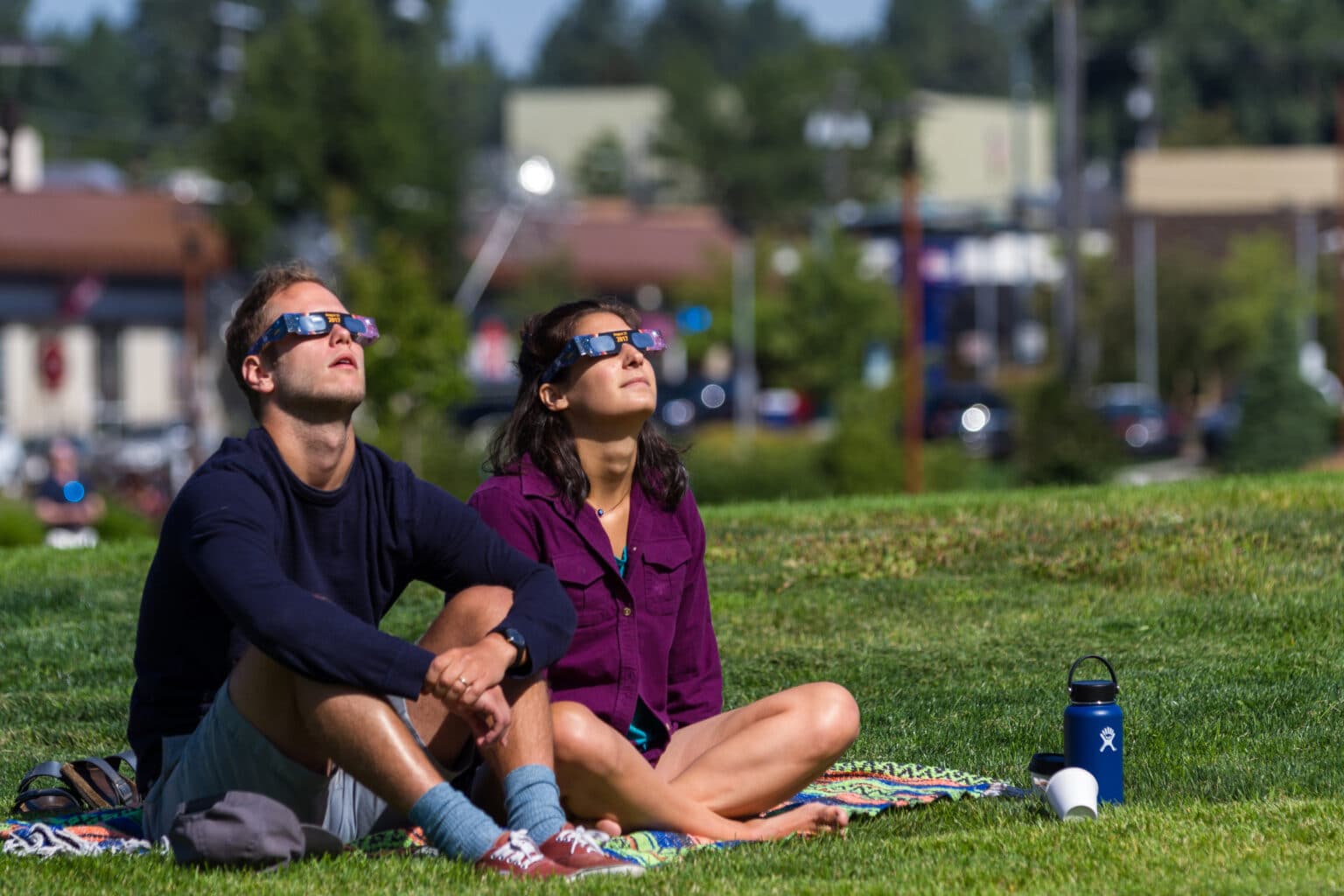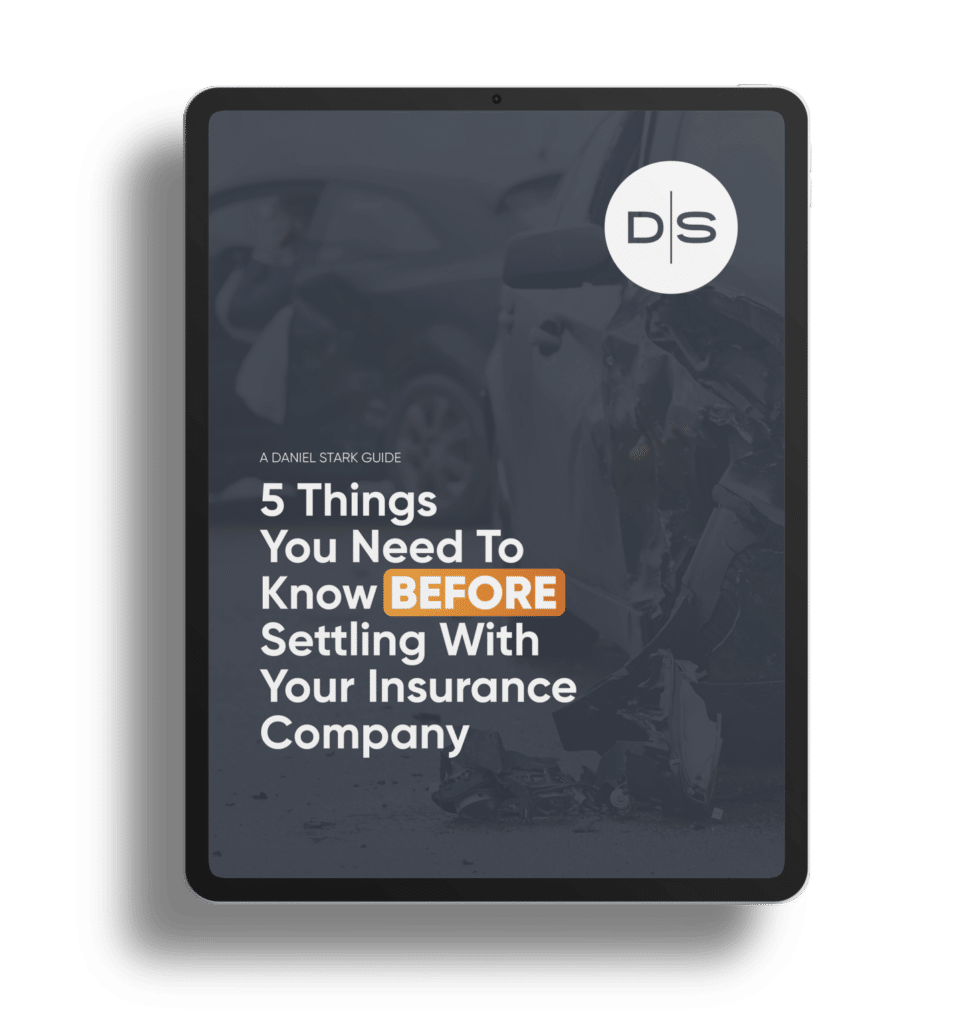For the first time in over 145 years, a total solar eclipse will be visible in a narrow strip of Texas on April 8th, 2024! This year’s eclipse is a once-in-a-lifetime experience you don’t want to miss.
If you are planning on driving during the eclipse, here are five essential safety precautions to keep in mind:
1. Don’t look directly at the sun without special eye protection for the eclipse.
Whether you’re watching a partial or a total eclipse, proper eye protection is a must.
- If you’re outside the “path of totality,” you’ll witness a partial eclipse — where the moon partially covers the sun.
- If you’re inside the path of totality, you’ll see a total eclipse — when the moon moves directly in front of the sun, completely hiding the sun from view.
What distinguishes a total eclipse from partial solar eclipses is you have the chance to briefly observe the phenomenon with the naked eye.
This means that proper eye protection must be worn throughout the total solar eclipse except during the short “totality” phase when the moon fully blocks the sun. However, as soon as you see part of the sun reappear, immediately put your eclipse glasses back on.
2. Purchase certified eclipse glasses that meet safety standards.
To protect your eyes during the solar eclipse, it’s crucial to use proper eclipse glasses. These specialized glasses are designed to filter out harmful solar rays and ensure safe viewing of the event.
Eclipse glasses differ from regular sunglasses because they must meet the ISO 12312-2 international standard to provide adequate protection. To purchase safe eclipse glasses, check out these approved vendors listed by the American Astronomical Society.
Beware of counterfeit products claiming they’re endorsed by NASA, as NASA doesn’t endorse specific brands of solar viewers. Counterfeit products can pose risks of vision impairment or blindness from overexposure to sunlight.
Before using your eclipse glasses, make sure to check them for any damage. If you find any issues, discard the eyewear right away. During the eclipse, keep a close eye on children to ensure they observe safe viewing practices. Also, never look directly at the sun through a camera lens, telescope, binoculars, or any optical device, even with eclipse glasses on, as this can lead to serious eye injury from concentrated solar rays.
3. Prepare for a surge of visitors and drivers during the solar eclipse.
The 2024 solar eclipse will be the last to grace the United States until 2044, so April’s eclipse is estimated to see as many as 4 million people travel from outside the path of totality to see the phenomenon. Of the 31 million people who live in the path of totality, many will also drive to get a more optimal view. Towns along the path of April’s total solar eclipseare preparing for a surge of visitors eager to witness this unique solar event.
It’s been seven years since the last solar eclipse crossed the U.S. Following the 2017 eclipse, interstate highways within the path of totality experienced delays of up to 13 hours, with non-interstate routes also facing congestion, including one noteworthy 70-mile traffic backup. That’s why you need to be prepared for heavy traffic, potential delays, and increased car crashes.
If you’re a local resident, here’s some steps you can take to prepare:
a. Stock up on fuel and food.
During the last U.S. total solar eclipse in 2017, many travelers encountered fuel shortages and limited food availability before and after the eclipse. We strongly recommend preparing for the eclipse as you would prepare for a snowstorm — by stocking up on necessities:
- Grocery Shopping: Avoid the last-minute rush by ensuring you have food supplies on hand.
- Vehicle Readiness: Top off your gas tank or fully charge your electric vehicle before April 8th.
- Medication: Confirm that your prescriptions are up to date.
- Animal Care: Stock up on provisions for any animals under your care.
b. Be vigilant on the road.
The eclipse is expected to trigger significant traffic jams, particularly in the Dallas-Fort Worth metro area. Here are some tips to navigate the road safely:
- Leave for work early or consider alternative routes to avoid highway congestion within the eclipse’s path of totality. Steer clear of peak eclipse viewing hours to minimize traffic encounters.
- Refuel your vehicle before reaching crowded areas to prevent fuel shortages during potential delays or prolonged stops on the road.
- Expect limited parking availability at rest areas and off-highway stops, including gas stations near the eclipse path.
- Stay alert and cautious of other drivers. Distracted driving and heightened traffic volume will increase the risk of vehicle collisions.
c. Prepare for phone tower blackouts during high traffic periods.
As crowds gather for the solar eclipse, the strain on cell phone towers may result in communication challenges and potential blackouts. Here’s how to stay prepared:
- Expect signal issues in popular eclipse viewing areas. During the 2017 eclipse, cell phone towers were overloaded due to a high volume of photo sharing and navigation, leading to communication disruptions.
- Texas emergency officials suggest assembling a solar eclipse survival bag that includes essentials such as a mobile phone charger, hard copy maps, and a compass.
- In case of network issues, jot down important phone numbers as a backup communication method during periods of service interruptions.
4. If possible, stay home to avoid busy roads before and after the Texas solar eclipse.
As the solar eclipse draws near, fire departments in the eclipse’s path are gearing up for increased activity. Unprotected sun gazing poses a risk of eye injuries, while the anticipated traffic surge will likely increase the chances of road collisions.
With hotels nearing full capacity, solar eclipse traffic will be overwhelming once the event ends. Many factors could heighten the risk of vehicle wrecks, including visitors navigating unfamiliar roads, drivers speeding to reach viewing spots on time, distracted driving during the rare celestial event, intoxicated driving after eclipse-related festivities, and eclipse viewing from unsafe roadside locations.
With this in mind, we strongly advise you to watch the Texas solar eclipse safely from the comfort of your own home. Avoid driving during the solar eclipse hours if possible.
5. Know the specific eclipse timing in your area.
You may be wondering: what time will the solar eclipse happen in Texas?
The precise timing of the total eclipse varies by your location and time zone. Here are the specific totality times for the following Texas cities:
- Austin: The Austin, Texas solar eclipse starts at 12:14 p.m. with totality occurring around 1:36 p.m. Austin will experience over 2 minutes of eclipse totality.
- Bryan/College Station: In Brazos Valley, the partial solar eclipse starts at 12:18 pm. The sun will be at its most hidden at 1:39 pm.
- Killeen: The eclipse starts at 12:18 p.m. Totality starts at 1:38 p.m. and lasts for over 4 minutes.
- Waco: The eclipse starts at 12:20 p.m. and its totality occurs at 1:40pm, lasting around 4 minutes.
- Tyler: The eclipse begins at 12:24 p.m. Totality occurs at 1:44pm and lasts almost 2 minutes.
The entire eclipse, whether partial or total, will span approximately 3 hours. Remember these safety tips while viewing the eclipse and driving to ensure a safe and enjoyable experience!












